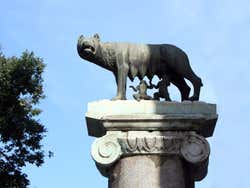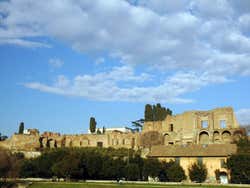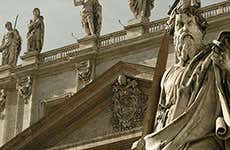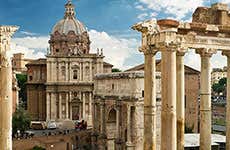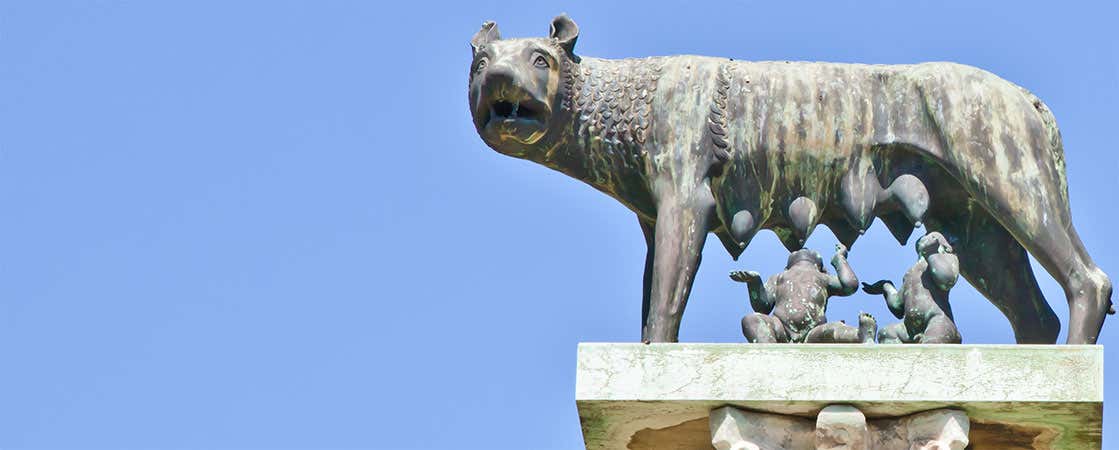
Romulus and Remus
There are several fascinating legends and myths about how the city of Rome was founded, all collected by the Italian historian, Tito Livio.
The Legend of Romulus and Remus
Legend has it that Ascanio, son of the Trojan hero Aeneas (son of Venus and Anchises), founded the city of Alba Longa on the right bank of the river Tiber. Many of Aeneas' descendants reigned this settlement peacefully. When Nimitor was king, his brother Amulius seized power and dethroned Nimitor, killing his male heirs and forcing his daughter, Rhea Silvia, to become a Vestal Virgin so that she would not provide a male heir to the throne.
Nevertheless, Rhea Silvia gave birth to twins, Romulus and Remus, whose father was thought to be Mars, the god of War. Amulius imprisoned the daughter and condemned the babies to death by drowning in the river Tiber. However, the servant in charge of the task took pity on them and instead placed the twins into a basket and pushed them down the River Tiber. They were safely carried to the area of the seven hills.
There, the boys were found by a she-wolf called Lupa who nursed them in her lair in Palatine Hill until they were found by a shepherd and his wife, who raised them as shepherds. As adults, Romulus and Remus were two natural-born leaders and in a fight killed King Amulius and reinstated Nimitor as king of Alba Longa. Seeking to establish their own settlement, Romulus finally built a wall around Palatine Hill, the location he had chosen for the founding of Rome.
The she-wolf who nursed Romulus and Remus is said to have been their human foster mother. The term wolf, in Latin lupa, was also used, in a derogatory sense, for the prostitutes of the time.
When seeking the perfect location for their new city, the twins wandered across the seven hills (Aventine, Celio, Capitol, Esquiline, Palatine, Quirinal and Viminal). Remus wished to start the city on Aventine Hill, while Romulus preferred Palatine Hill. In order to decide which brother was right they agreed to consult augury, where birds are examined to see what the gods favoured. Remus claimed to have seen six birds, whereas his brother had seen twelve. Even though Romulus had seen more birds, Remus argued that he had seen them first and therefore the city should be built on the Aventine Hill. Meanwhile, Romulus began to build a wall on his hill, which Remus decided to jump over. Angered by his brother’s action, Romulus killed him. According to the legend, this took place in 754 BC.
The Legend of Aeneas
According to another legend, the Trojan prince, Aeneas, reached the Italian coast and married Lavinia, the daughter of King Latinus, thus becoming king.
This myth is not only told by Greek historians, but is defended in Italy compared to other legends that give Rome an Arcadian origin, related to the myth of Evandro, or Achaean, related to Odysseus or Ulysses. The myth of Aeneas gives Rome a divine and Greek founding.
However, the tradition of a Trojan origin of Rome cannot be considered admissible if you compare the date of the destruction of Troy (1200 BC) with the archaeological remains of the settlement of Latium and Septimontium, similar to many other Late Bronze Age settlements in Italy and far from being a major settlement, let alone a city.
